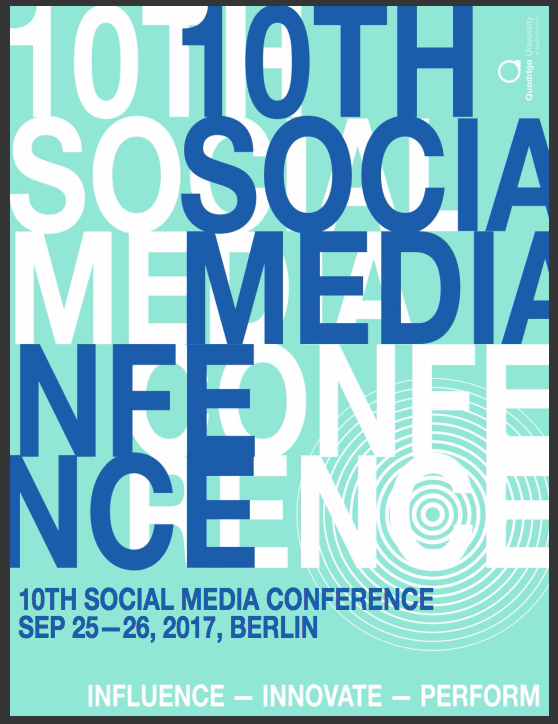Quadriga’s Social Media Conference has reached a beautiful milestone this year – 10 years – and we celebrated it the way we know best: focusing on the things that matter most this year, that is “influencer relations, channels & content and performance & controlling”.Â
The colleagues have prepared a very exciting line up and program, with very interesting and international cases.
My involvement in this year’s conference has been two fold: to run a workshop on social media measurement and be part of a panel discussing adoption of platforms like Snapchat and Instagram and the measurement of their effectiveness.
Measurement heroes include their measurement into their objectives. Â
I have focused my workshop on the need of building SMART objectives that are aligned with the business/organisational objectives and that therefore can be easily linked with measurement.
In this respect, I have attempted to create a link between the type of communication objectives generally seen (knowledge – attitude – behaviour) and their link with outputs – out-takes – outcomes (something that both AMEC and IPR, and we here at Quadriga are endorsing).
All in all, business objectives, I argued, will put a lot more emphasis on attitudinal and behavioural objectives than on knowledge/exposure/awareness objectives. Measurement-wise therefore, it is not the number of outputs and activities one undertakes but rather the out-takes and outcomes of these activities that will matter and that management and CEOs will inquire about.
Coming up with SMART objectives requires a lot more effort and attention that churning out generic, goal-look-like sentences. They require focus and a critical approach to the business and to the communication department’s/agency resources (whether personal, financial or technical). However, having these in place, helps everyone focus on what matters and what is promised as well as identify the issues that would need increased attention.
Time, context and conversions matter
Time matters because measurement needs a before and after moment.
Context matters because it is what influences the focus, choice and emphasis of objectives stakeholders and channels
Conversions matter because vanity metrics don’t. The materials I have shared and included in the references final slide provide plenty of examples of what metrics would matter (share of voice, net promoter score, net advocacy score and more).
Snapchat and Instagram – creative channels but they need to fit the strategy

The panel discussion with Natan Edelsburg (Muck Rack) and Philipp Thurmann (buddybrand) went in the same direction. Instagram and Snapchat are popular right now, thrive on ephemeral content and have limited measurement platforms/opportunities hence communicators adopting them need to approach them with the same strategic outlook as the other channels, considering their stakeholders and business objectives. In this sense, whether Snapchat or Instagram or any up and coming platform (Music.ly, Yay or whatever else) communicators fear not change as the fundamentals of strategic communication continue to apply. (By the way, here are some more thoughts on the topic I shared in a recent interview).
An awesome two days dare I say: great examples, fantastic and inspiring people. Â
And to finish with what the Tina Mellergaard’s (Head of Social Media of the Danish Agriculture and Food Council): “In Gog we trust. Everything else needs metrics”.
